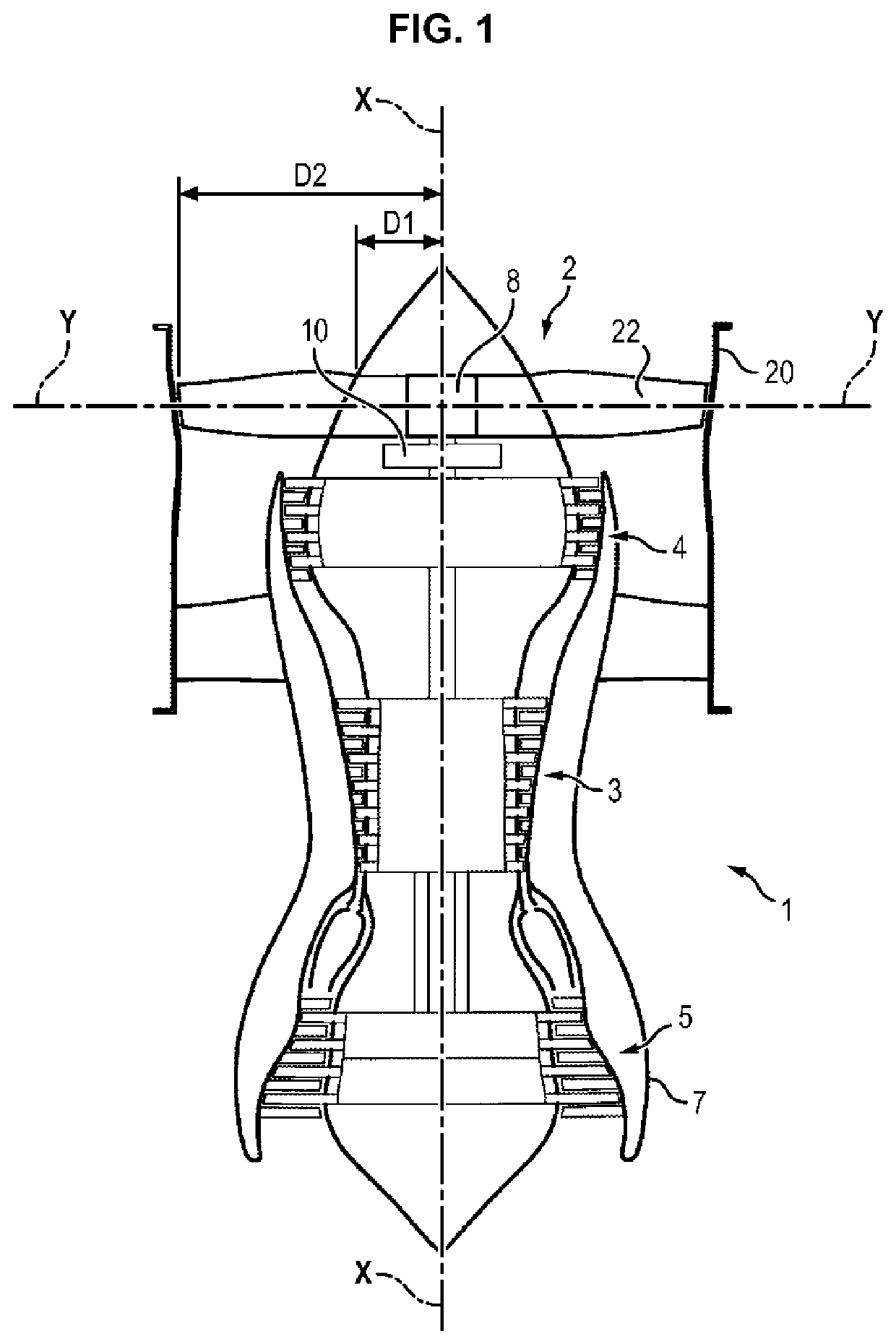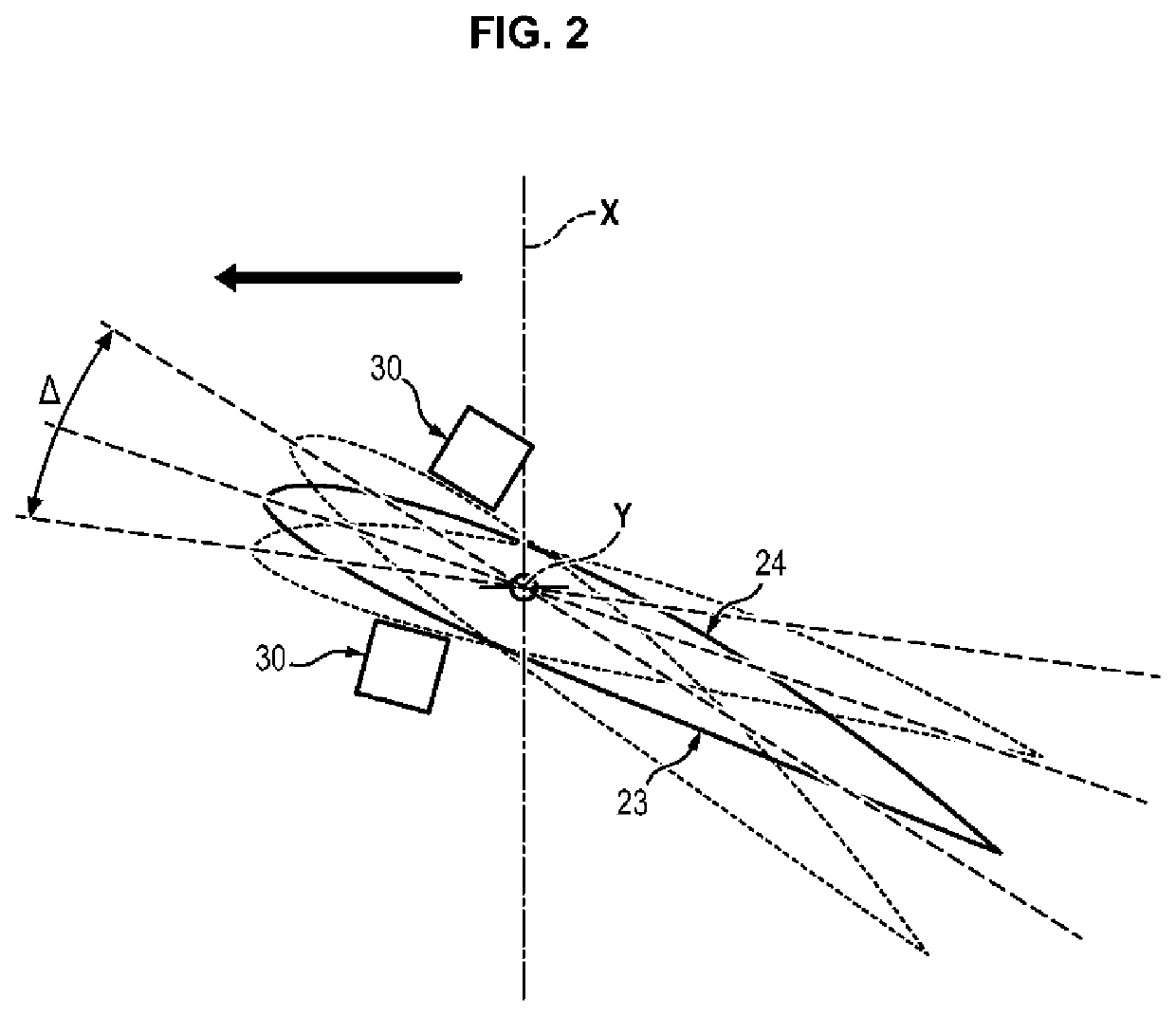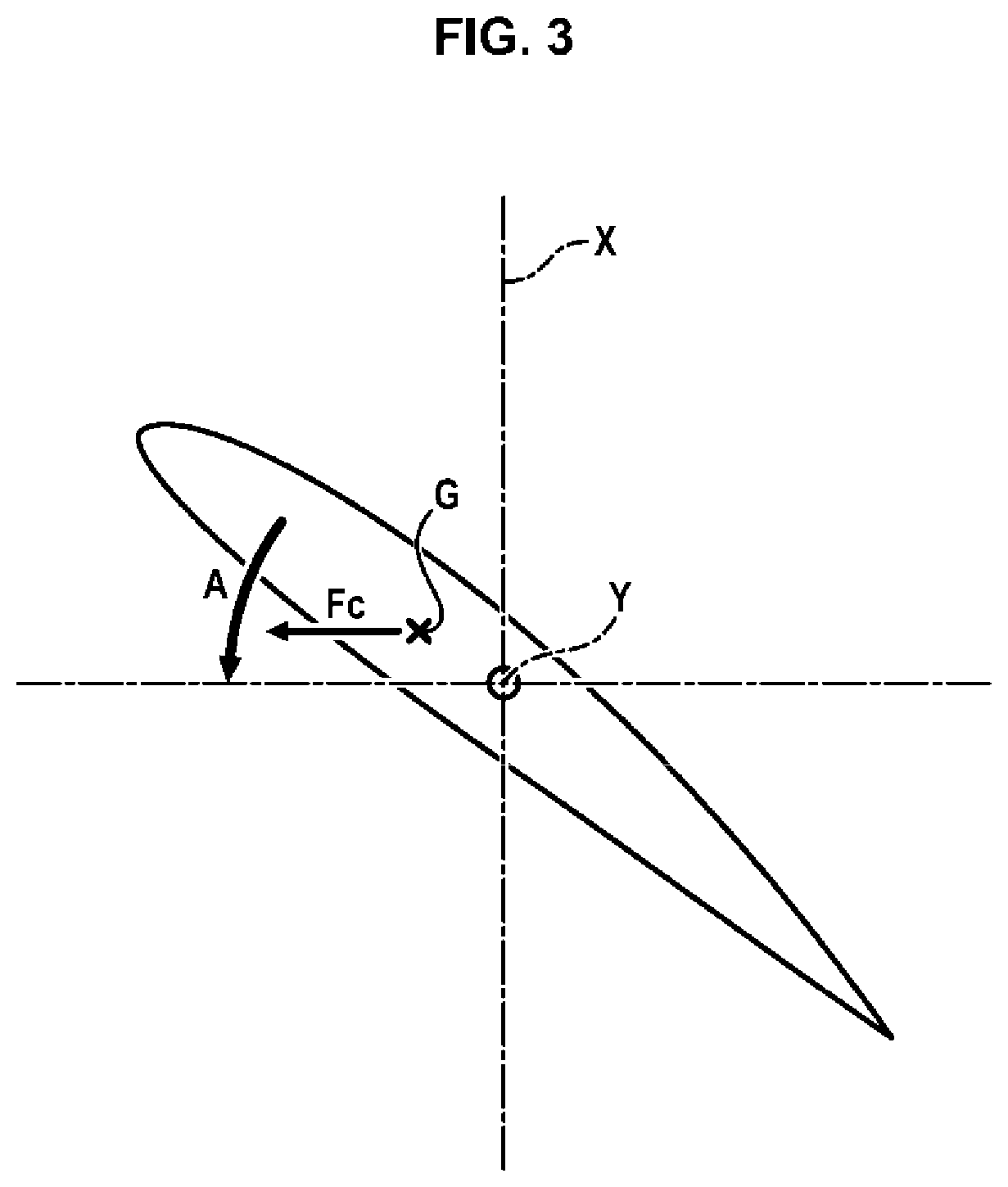Low-pitch variable-setting fan of a turbine engine
a variable setting, low-pitch technology, applied in the direction of machines/engines, liquid fuel engines, rotors, etc., can solve the problems of difficult flight with the remaining engine, unfavorable drag of the airplane, and risk of over-speed, and achieve low axial and radial bulk, low cost, and high bypass ratio
- Summary
- Abstract
- Description
- Claims
- Application Information
AI Technical Summary
Benefits of technology
Problems solved by technology
Method used
Image
Examples
first embodiment
[0041]In a first embodiment, the pitch change mechanism 8 is collective. This mechanism is of the ram type and is configured to drive the fan blades in pivoting around their pivoting axes Y depending on the flight phases of the turbine engine 1. Collective pitch change mechanisms 8 are known to persons skilled in the art.
[0042]For one example of this type, it is possible [to refer] to patent application FR 1650041 which proposes a system for controlling the orientation of the blades of a turbine engine fan in which the movable portion of a ram is coupled to pivots of the fan blades so that translation of the movable portion of the ram causes a modification of the orientation of said blades and therefore of their setting.
second embodiment
[0043]In a second embodiment, the pitch change mechanism 8 can be individual.
[0044]The applicants became aware that, thanks to the presence of the fan casing 20, speed variations upstream of the fan 2 are limited regardless of the flight phase. It is therefore possible to reduce the necessary range Δ of variation for the setting angle of the blades 22 of the fan 2.
[0045]In order to avoid the blades 22 setting themselves into the flat pitch position in the event of failure of the pitch change mechanism 8, the range Δ of variation of the setting angle of the blades 22 of the fan 2 is limited to approximately 20°. Thus, whatever position is taken by the blade 22 under the influence of the centrifugal forces, it does not risk generating excess drag for the aircraft.
[0046]The range Δ of variation of setting angles of the blades 22 comprises the angular position of the blade 22 in the cruise phase.
[0047]In one embodiment, the angular setting range Δ of each blade 22 is centered on an angu...
PUM
 Login to View More
Login to View More Abstract
Description
Claims
Application Information
 Login to View More
Login to View More - R&D
- Intellectual Property
- Life Sciences
- Materials
- Tech Scout
- Unparalleled Data Quality
- Higher Quality Content
- 60% Fewer Hallucinations
Browse by: Latest US Patents, China's latest patents, Technical Efficacy Thesaurus, Application Domain, Technology Topic, Popular Technical Reports.
© 2025 PatSnap. All rights reserved.Legal|Privacy policy|Modern Slavery Act Transparency Statement|Sitemap|About US| Contact US: help@patsnap.com



